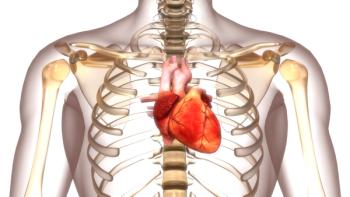
Nitinotes wins CE Mark for automated suturing system to expand access to minimally invasive obesity treatment
Key Takeaways
- Nitinotes Ltd.'s EndoZip System, a fully automated suturing platform for ESG, has received CE Mark approval, allowing EU commercialization.
- EndoZip transforms ESG into a single-physician, outpatient procedure, expanding access for patients with a BMI of 30-40.
EndoZip platform automates endoscopic sleeve gastroplasty, aiming to simplify procedures and widen patient access across Europe.
Nitinotes Ltd. has received CE Mark approval for its EndoZip System, the first fully automated suturing platform for endoscopic sleeve gastroplasty (ESG), the company announced. The clearance allows Nitinotes to begin commercializing the system across the European Union and other CE Mark-accepting markets.
The Israel-based company said EndoZip automates suturing during ESG procedures, turning what has traditionally been a complex, dual-operator surgery into a single-physician, outpatient treatment. ESG offers a minimally invasive option for patients with a body mass index between 30 and 40 who have not achieved weight loss through lifestyle changes or medication.
“CE Mark approval of EndoZip is a pivotal milestone for Nitinotes,” said Lloyd Diamond, the company’s chief executive officer. “This achievement validates the safety and performance of our technology and paves the way for commercialization in Europe. With EndoZip, we have the potential to dramatically expand patient access to a safe, durable, minimally invasive obesity treatment while creating significant value for providers and health care systems.”
Nitinotes plans to introduce EndoZip at select European centers of excellence to build clinical adoption and real-world data before expanding its market reach. The company also intends to begin a pivotal U.S. investigational device exemption trial to support an eventual FDA submission.
Advances in obesity treatment technology
The treatment landscape for
Recent innovations have focused on simplifying ESG and improving its consistency. Automation, robotic assistance, and improved endoscopic visualization are shortening procedure times and reducing reliance on advanced operator skills—factors that have historically limited adoption. These advances are also enabling ESG to be performed in outpatient settings, lowering costs and expanding access.
Beyond procedural improvements, new devices are emphasizing long-term weight-loss durability and patient safety through advanced suturing techniques and materials designed to reduce tissue trauma. Meanwhile, growing integration of digital health tools is allowing clinicians to better track outcomes, tailor follow-up care, and monitor metabolic improvements remotely.
Collectively, these innovations are reshaping the continuum of
Newsletter
Stay informed and empowered with Medical Economics enewsletter, delivering expert insights, financial strategies, practice management tips and technology trends — tailored for today’s physicians.








